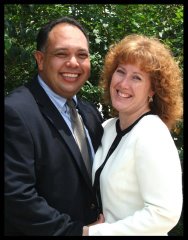Clarion Books, 1997
ISBN 978-0-395-77607-0
Summary:
The Great Frog Race is a collection of poems inspired by childhood in the country. The poems are told with a child's eye viewing everyday things: garden hoses, frogs, meadows, buckets, and dropped scoops of ice cream. Kate Kiesler illustrates each poem, and the overall effect is that of following a young girl's experiences growing up in the country.
Critical Analysis:
Sadly, young children may not find these poems interesting because while they are light, they are not silly, and the subject matter may not be familiar to suburban and urban kids. Grownups, however--especially ones who have spent time on a farm or in the country--will be thoroughly delighted with these poems.
George is a master of capturing poignant moments in her mostly free verse poetry. In "Evening Rain," she is able to capture the beauty of light sparkling off raindrops during an evening shower through use of creative personification:
"The porch light shines on rain
taking thin silken stitches
with strands of wet thread.
I run outside to the rain
to see what it is sewing."
Some of the poems such as "Ambush" and "The Great Frog Race" are short narratives, while many of the poems are simply impressions of a moment or a memory. In the haiku "Morning Grasses," George writes
"Thin frosted grasses
lying flat under footprints
slowly straighten up."
George also uses unexpected metaphor. She describes a spring wind blowing through a window as a lady who "looked inside," "whispered her thanks,/lifted her silk skirts,/and rustled away."
This entire series of poems is written with a child's ability to focus on the extraordinary in the everyday. The overall feeling, however, is not that the child is writing the poems, but rather that the moments and impressions are filtered through an adult's fond memory of childhood.
Review Excerpts:
"George's deft, short poems take many forms as they encapsulate appreciative glimpses of the natural world and small moments of childhood. Haiku, blank verse, bits of rhyme, and some lovely little bundles of words are sprinkled along in pieces that are descriptive and engaging. . . . Most readers will easily find favorites here. The soft, full- and double-page scenes are evocative and inviting, featuring a comfortably homely cast of boys and girls. For personal enjoyment, reading aloud, and encouraging children in the writing of poetry--this offering has lots of uses."
Margaret Bush, School Library Journal, April 1997, v. 43
"The poems are quiet and observant, tending towards free verse and sometimes reminiscent of William Carlos Williams ('A crow stole the cone/ and six tiny sparrows hopped/ vanilla footprints/ across the sidewalk'--'What Happened to the Ice Cream Cone Someone Dropped'). The phraseology is fresh and apt, employing tactile as well as visual conceits, and the subjects are kid-appealing ones indeed."
Deborah Stevenson, Bulletin of the Center for Children's Books, June 1997, v. 50
Connections:
- The Lee Bennett Hopkins Poetry Award
- Have students find a poem they like in The Great Frog Race. Then have them write "copycat" poems about everyday objects in the classroom such as erasers, chalk dust, or artwork hanging on the bulletin board.
- Quick write: Who is the girl seen in many of the illustrations? Where does she live? What is her family like?
- Find examples of simile, metaphor, and personification. Why are these devices effective?

No comments:
Post a Comment